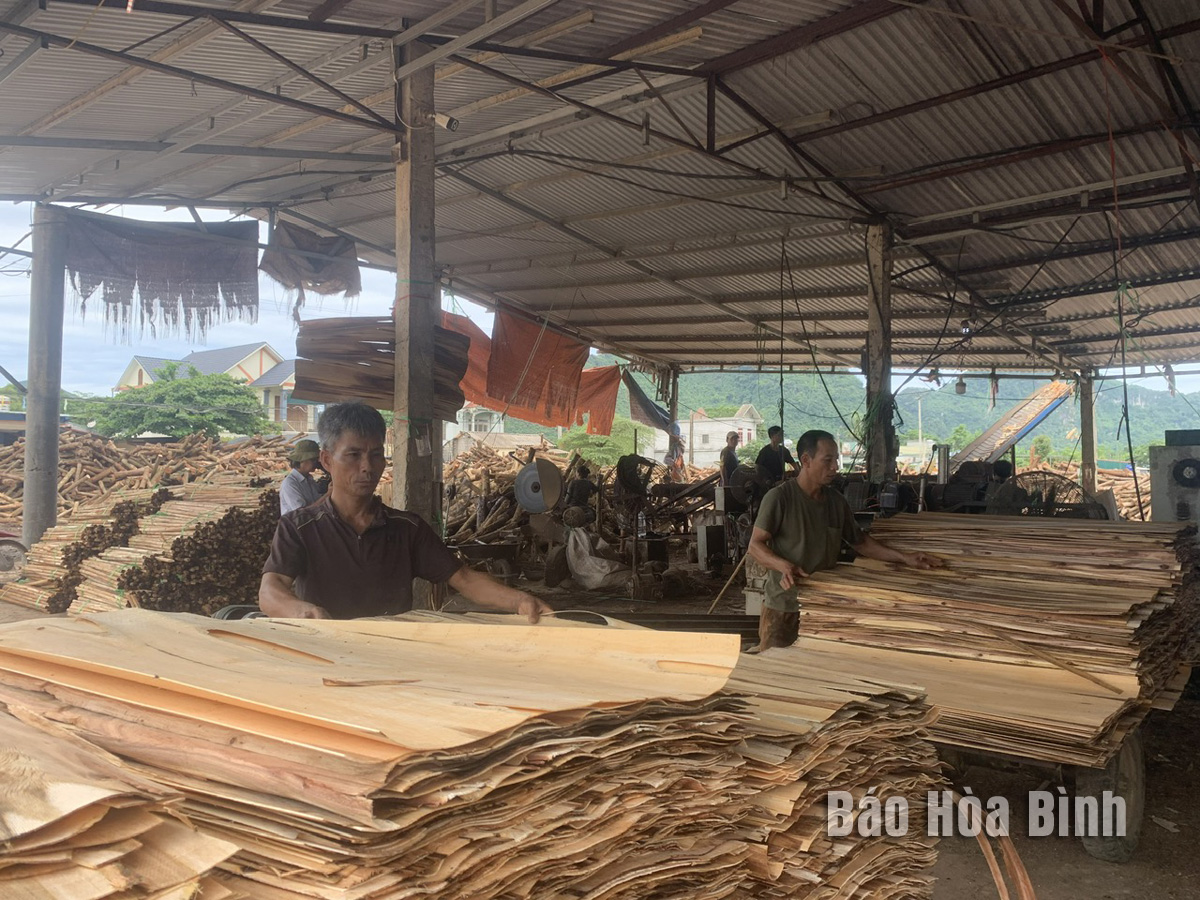
To unlock the full potential of its forest resources, the standing board of the provincial Party Committee on July 30, 2020 issued a Resolution on the sustainable development of production forests through 2025, with a vision toward 2030.
The resolution set the goals of maintaining annual forest
coverage above 50% and converting 3,000 ha of small-and medium-timber plantations
into large timber plantations.
Nearly five years later, the province has not only expanded its large-timber
plantations but also fostered growing public awareness of their long-term
economic and environmental benefits. This shift has uplifted local livelihoods,
particularly for forest growers like Bui Van Nhinh, a pioneer in Lac Thuy
district’s Hung Thi commune.
Lac Thuy district is home to 19 wood processing
facilities with various products.
With over 20 years in forestry, Nhinh has dedicated his career to cultivating
large-timber forests, amassing the commune’s largest planted forest area. His
focus on sustainable practices has significantly improved his family’s economic
prospects, demonstrating the profitability of long-term forestry.
In April 2021, the Prime Minister approved the Vietnam forestry development
strategy for 2021–2025, with a vision to 2050. In response, Hoa Binh province
rolled out its own sustainable forestry development plan aimed at turning
forestry into a hi-tech, efficient, and competitive economic sector. The
strategy calls for integrated value chains, from forest cultivation and
protection to timber processing and trade.
Under the plan, Hoa Binh aims to increase the productivity of planted forests
by 1.3 times and achieve an average timber yield of 150 cu.m per ha per large
timber cycle. Income generated from production forest land is expected to rise
2.5 times, reaching 25 million VND (1,000 USD)/ha/year, with the forestry
sector contributing 16% to the agro-forestry-fisheries’ total value.
The expansion of large timber plantations lays
the groundwork for developing high-value timber products geared for export. To
meet global standards, many firms are forging stronger links with forest owners
and communities to secure stable and sustainable raw material zones. A key
component of this effort is the adoption of Forest Stewardship Council (FSC)
certification, which enables the export of sustainably sourced timber
products.
The Hoa Binh provincial People's Committee held a gathering at the provincial Military Command headquarters on May 20 to commend the armed forces that took part in a military parade celebrating the 50th anniversary of the Liberation of the South and National Reunification on April 30.
Throughout his revolutionary life, Uncle Ho visited Hoa Binh province four times. He also sent dozens of letters, telegrams, greeting cards, and heartfelt messages to local officials, Party members, and people of all ethnic groups, urging them to remain united, support one another, strive for progress, and actively engage in both production and resistance efforts to build a prosperous homeland.
In recent years, the education and training sector in Cao Phong district, Hoa Binh province, has actively integrated its tasks with the promotion of studying and following President Ho Chi Minh’s thought, ethics, and style. This approach has contributed significantly to improving the overall quality of education across the district.
The Hoa Binh provincial museum on May 16 opened a thematic exhibition "Under the flag of the glorious Communist Party of Vietnam" with more than 200 documents, images and objects featuring the glorious 95-year journey of the Party.
Hoa Binh police are collecting public feedback on amendments to the 2013 Constitution via the national identification app VNeID. This innovative approach marks a giant leap towards modernising grassroots democracy and enhancing transparency in public consultation.
Nguyen Phi Long, alternate Member of the Party Central Committee and Secretary of the Hoa Binh Party Committee, on May 14 chaired a meeting of the provincial steering committee for its programme to eliminate makeshift and dilapidated housing for the poor. The session reviewed the programme’s outcomes to date and discussed forthcoming tasks.



